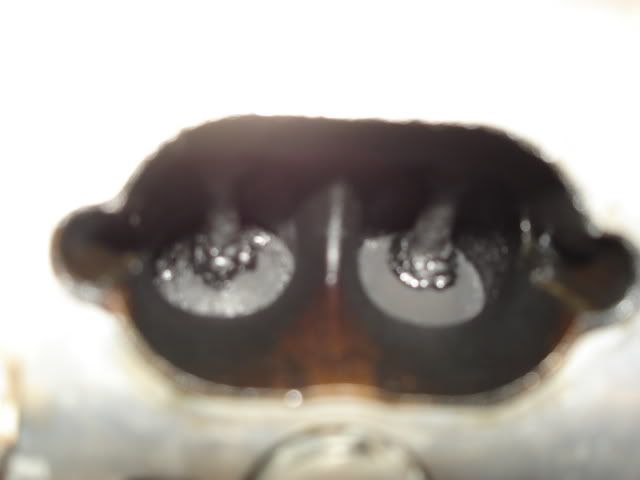Originally Posted By: Ibrahim
I am sorry, I meant to ask how can one explain Red Line having Lower Flash Point than Mobil 1, just trying to figure out, given that Red Line is highly Ester based!
this is just an educated guess on my part.if there are any chemist out there that specialize in this field,i hope you chime in.
i believe it may just be free fatty acids that are in the mix.these,of course,will be lighter fractions and will effect the FP.
i have also noticed this in many high quality or specialized oils that are definately known to be PAO/ester oils,so i've wondered the same thing,sometimes especially those that are supposed to have higher ester content.
...but there's a few things i believe we all need to keep in mind.
first,i'm sure you all know how they get the FP.it's just the lowest temperature at which an ignition source(flame)causes the vapors of the oil to ignite under certain conditions.the FP is when the flame appears and covers the whole surface of the oil.the oil is progressively heated and when the vapors mix with oxygen,it flashes.the temperature at which this happens,is recorded.the flash is momentarily and extinguishes quickly.the fire point of an oil,is different.
ok,fine,..but there's a few problems imo.
the most important to me is,the FP of an oil tells you nothing about the volatility of the formulation as a whole.
also of note is,FPs were first used and invented for the purpose of transportation and storing safety issues.
i'll write down separately a few other thoughts i have about FPs.
they can be useful when comparing extremely similar formulations,especially from the same company or source,in determining the quality of base stocks(what kind),the quality of the refining process,how a single cut may vary in quality or if it is actually a blend of two base oils of different viscosities mixed together.it may give you some idea of the most volatile parts of an oil,giving some indication of how it's made or what it has in it.however,imo,this is most useful when trying to determine if it's a group I II or III...but oils can vary so much that it seems useless at times,even when comparing oils from the same formulator/brand.you can still try to use it though,because you may be spot on,especially when you combine it with other information.
the type of test used for determining an oils FP can vary,so that can also be a problem.that i know of,there are at least three different types that are normally used,maybe more.
even with the same type of FP test,it can vary from one lab to the next.it can even vary in the same lab,at least this is what i've noticed.
there can be variations/differences on the same exact oil.
again,i have noticed lower FPs in oils that i know for sure are PAO/ester based compared to lower quality oils,so sometimes the FP becomes useless to me.
i have noticed that the FP in a particular oils PDS can be massively different to the FP stated on it's msds,...again,useless.(i tend to believe the FP on the msds more)
with used oil,it is a whole different ball game.
i hope this helps but just remember,you can use the FP to determine the quality your looking for but you must use it as a whole with all the other specs and what is known of an oil.with some oils,it may actually give you an indication about it's volatility,in others,not even close.in fact,i have noticed a comparatively low FP of an oil(certain high quality,known PAO/ester based oils) that has a very low NOACK at the same time and yet,seen high FP of an oil(known to be grp II and even some grp III) with a relatively high NOACK.
i wish they all published the NOACK,but alas,that is not to be.i have even noticed some oils that have a particularly low NOACK,this information not given on their PDS,...now THAT is weird.before deciding on an oil though,i call them and ask and if the information is not given,i tell them flat out i don't like that and won't use their oil.i'm patient though,sometimes the distributor has no clue,sometimes YOU know more about the oil they sell,and oil in general,then they do,..but the people with the white coats are different.(they know ALL about their oil)



